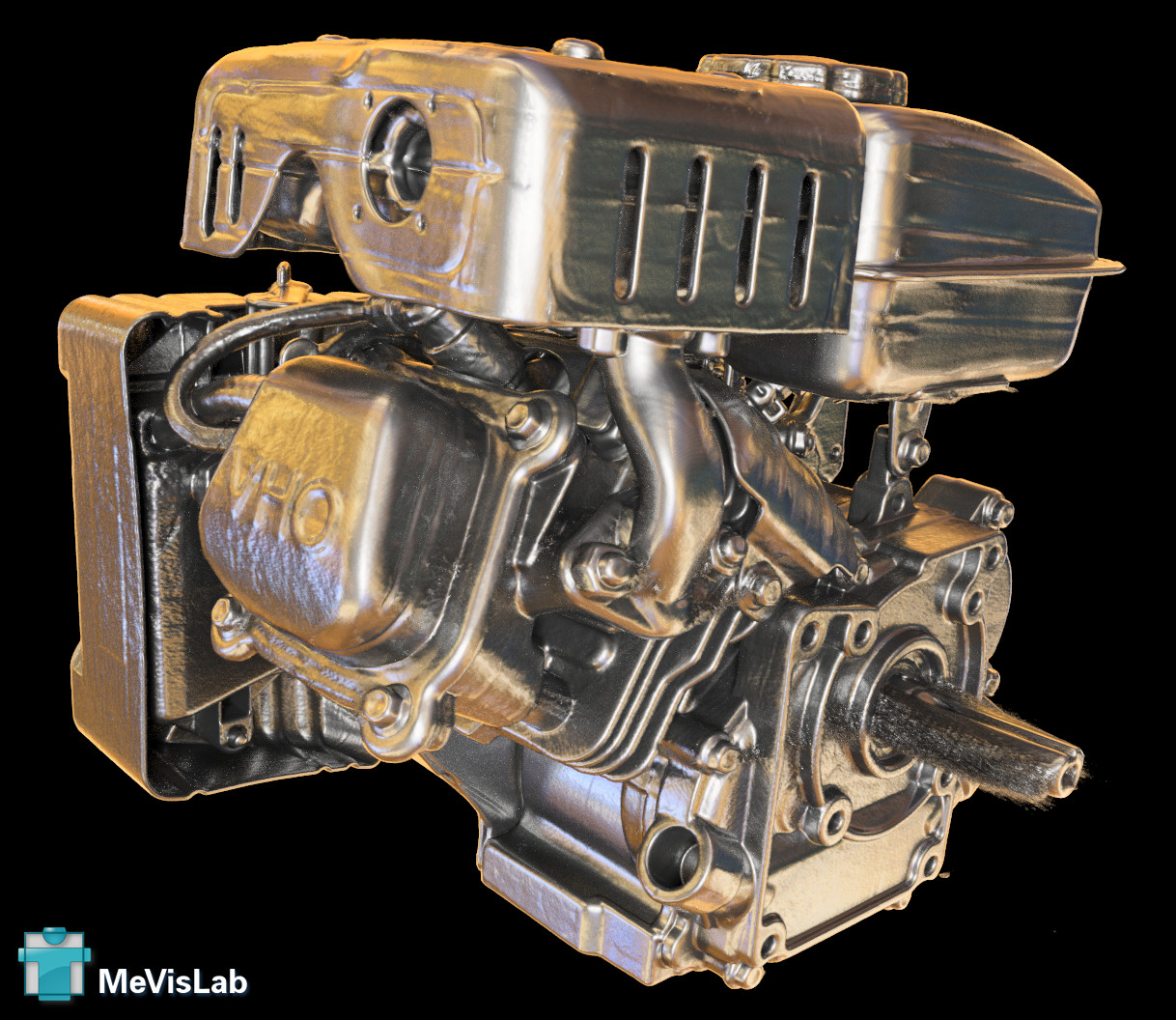SoPathTracerVolume¶
- InventorModule¶
author
package
dll
definition
keywords
Purpose¶
The SoPathTracerVolume module facilitates loading and rendering a volume in a SoPathTracer scene. The volume can render itself if Enable Volume Rendering is enabled, or it can be rendered or utilized by other modules, such as SoPathTracerVolumeInstance, SoPathTracerIsoSurface, or :module:SoPathTracerSlice.
The same volume can be rendered with different LUTs, transformations, clipping, masking, tagging, and subvolume settings using multiple SoPathTracerVolumeInstance instances.
For additional material and volume shader settings, you can add a SoPathTracerMaterial to the inMaterial. Through the material, it is also possible to perform boundary enhancement and silhouette rendering.
The SoPathTracer supports an unlimited number of volumes (subject to GPU limits) and allows for arbitrary affine transformations of the volumes. All volumes and geometries cast shadows on each other and are correctly integrated.
Volume transformations can be performed either via the Open Inventor scene or through the Matrix. You must use SoTransformSeparator or SoResetTransform when transforming a volume via the scene to ensure that the model transformation at the SoPathTracer is identity.
Restriction: In the current implementation, translucent overlapping volumes are not combined physically correctly; however, the implementation functions well for surface-like volumes and LUTs without large, highly transparent regions.

Windows¶
Default Panel¶

Input Fields¶
inMaterial¶
- name: inMaterial, type: SoNode¶
inLUT¶
- name: inLUT, type: MLBase, deprecated name: inDiffuseLUT¶
inVolume¶
- name: inVolume, type: Image¶
The input dataset.
Parameter Fields¶
Field Index¶
|
|
|
|
|
|
|
|
|
|
|
|
|
|
|
|
|
|
|
|
|
|
|
|
|
|
|
|
|
|
|
|
|
|
|
Visible Fields¶
Enable Clipping¶
- name: enableClipping, type: Bool, default: TRUE¶
Flip Clipping¶
- name: flipClipping, type: Bool, default: FALSE¶
Cast Shadow¶
- name: castShadow, type: Bool, default: TRUE¶
Receive Shadow¶
- name: receiveShadow, type: Bool, default: TRUE¶
Enabled¶
- name: enabled, type: Bool, default: TRUE¶
Enable Volume Rendering¶
- name: enableVolumeRendering, type: Bool, default: TRUE¶
Volume Name¶
- name: volumeName, type: String, default: main¶
Mask Volume Name¶
- name: maskVolumeName, type: String, default: mask¶
Tag Volume Name¶
- name: tagVolumeName, type: String, default: tags¶
Gradient Volume Name¶
- name: gradientVolumeName, type: String, default: gradients¶
Sets a name that enables loading a volume with :module:SoPathTracerGradientVolume.
Time Point¶
- name: timePoint, type: Integer, default: 0¶
Mask Color0¶
- name: maskColor0, type: Color, default: 1 0 0¶
Mask Color1¶
- name: maskColor1, type: Color, default: 1 1 1¶
Mask Alpha0¶
- name: maskAlpha0, type: Float, default: 0, minimum: 0, maximum: 1¶
Mask Alpha1¶
- name: maskAlpha1, type: Float, default: 1, minimum: 0, maximum: 1¶
Mask Tag0¶
- name: maskTag0, type: Integer, default: 0, minimum: 0, maximum: 1¶
Mask Tag1¶
- name: maskTag1, type: Integer, default: 0, minimum: 0, maximum: 1¶
Step Size Factor¶
- name: stepSizeFactor, type: Float, default: 1, minimum: 0.25, maximum: 10¶
Step Size Factor Shadow¶
- name: stepSizeFactorShadow, type: Float, default: 1, minimum: 0.25, maximum: 10¶
Self Shadowing Offset¶
- name: selfShadowingOffset, type: Float, default: 1, minimum: 0, maximum: 10¶
Transpose matrix¶
- name: transposeAdditionalMatrix, type: Bool, default: TRUE¶
Matrix¶
- name: additionalMatrix, type: Matrix, default: 1 0 0 0, 0 1 0 0, 0 0 1 0, 0 0 0 1¶
X (subVolumeStartX)¶
- name: subVolumeStartX, type: Integer, default: 0¶
Y (subVolumeStartY)¶
- name: subVolumeStartY, type: Integer, default: 0¶
Z (subVolumeStartZ)¶
- name: subVolumeStartZ, type: Integer, default: 0¶
X (subVolumeEndX)¶
- name: subVolumeEndX, type: Integer, default: 999999¶
Y (subVolumeEndY)¶
- name: subVolumeEndY, type: Integer, default: 999999¶
Z (subVolumeEndZ)¶
- name: subVolumeEndZ, type: Integer, default: 999999¶
Use world positions¶
- name: subVolumeUseWorldPositions, type: Bool, default: FALSE¶
World Start Position¶
- name: subVolumeWorldStart, type: Vector3, default: 0 0 0¶
World End Position¶
- name: subVolumeWorldEnd, type: Vector3, default: 0 0 0¶
Tracing Method¶
- name: tracingMethod, type: Enum, default: Tracing_RayMarching¶
Shader Type¶
- name: shaderType, type: Enum, default: Shader_Hybrid¶
Gradient Factor¶
- name: gradientFactor, type: Float, default: 3, minimum: 0, maximum: 20¶